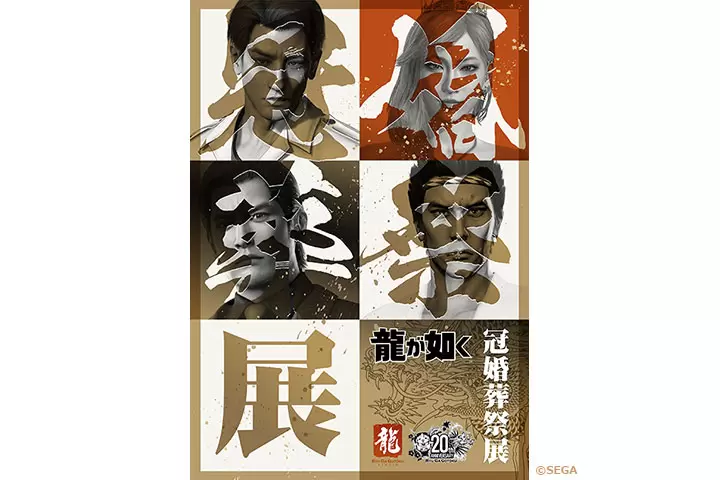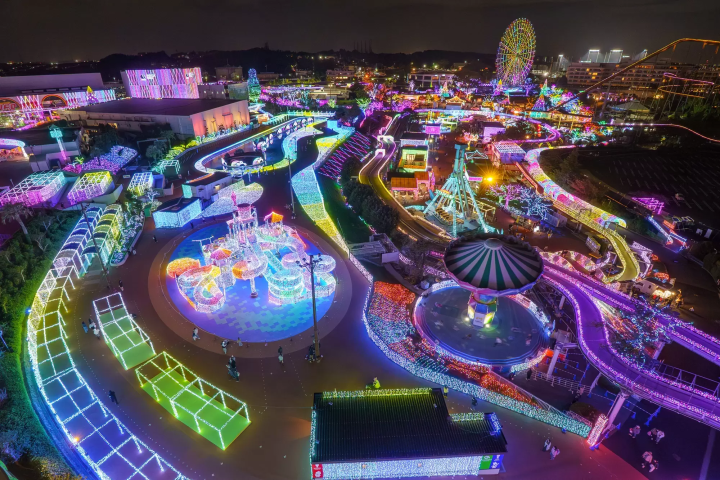[Nagano/Kamikochi/Sightseeing] One of Japan's most scenic mountain spots where you can easily enjoy the famous peaks of the Northern Alps
![[Nagano/Kamikochi/Sightseeing] One of Japan's most scenic mountain spots where you can easily enjoy the famous peaks of the Northern Alps](https://resources.matcha-jp.com/resize/720x2000/2023/11/21-153177.webp)
We would like to introduce you to the charm of Kamikochi, which is a mountain resort that can be enjoyed in a wide range of ways, from casual walks to full-scale mountain climbing, and is visited by more than 1 million people each year.
1. Mountain resort [Kamikochi]
Kamikochi is one of Japan's leading mountain resorts. It is located at the southern tip of the Japan Alps (a collective term for the Northern Alps, Central Alps, and Southern Alps), which are called the roof of Japan, and is located on the Sea of Japan side. The Northern Alps are a mountain range (Hida Mountains) located mainly on the border between Toyama and Nagano prefectures, and are a series of mountains over 3,000 meters high. It is a place that was once called a ``divine land'' because of its steepness, which made it difficult for people to get close to it. It is also famous as a trailhead for the Northern Alps, and Kamikochi is approximately 1,500 meters above sea level. It is located about 900 meters higher than the city center of Matsumoto City, Nagano Prefecture, which is also located at an altitude of about 600 meters. In addition to full-fledged mountain climbing, you can enjoy it in a variety of ways depending on your preference, such as strolling along the wooden path along the clear Azusa River, or walking with a guide. The season runs from April 27th, the opening ceremony every year, to November 15th, the closing ceremony. For nature conservation reasons, there are restrictions on the entry of private cars, so you will need to change to a shuttle bus or taxi at a parking lot along the way.
![[Nagano/Kamikochi/Sightseeing] One of Japan's most scenic mountain spots where you can easily enjoy the famous peaks of the Northern Alps](https://resources.matcha-jp.com/resize/720x2000/2023/11/29-154287.webp)
Hotaka Mountain Range from Taisho Pond
1-1 Popular bus tours
Direct bus tours to Kamikochi without transfers are popular. When considering not only the number of parking spaces and restrictions on private cars, but also driving after enjoying a walk or mountain climbing, we recommend taking a direct bus as it is less physically and mentally taxing. There is a bus terminal in Kamikochi, and there are at least one direct bus service per day from Tokyo, Nagoya, Osaka, and Kyoto, as well as route buses from Nagano/Matsumoto or Gifu/Takayama. If you don't want to waste your transfer time, we recommend using a tour from a travel agency.
[Basic information]
Name Kamikochi Information Center
Address: Azumi Kamikochi, Matsumoto City, Nagano Prefecture
Contact information: 0263-95-2433 (winter: 0263-94-2537)
WEB Natural Park Foundation official website
2. Popular sightseeing spots and standard courses that represent Kamikochi
2-1 Kappa Bridge
The symbol of Kamikochi is Kappabashi, a wooden suspension bridge spanning the Azusa River. It is located 5 minutes walk from Kamikochi Bus Terminal. It is said that it was once a drawbridge built from both banks of the river, but was changed to a suspension bridge in 1910. Many things are not clear, such as when it was created or why it was named Kappa, but it is a popular spot loved by many people as it blends well into the landscape of towering mountains.
![[Nagano/Kamikochi/Sightseeing] One of Japan's most scenic mountain spots where you can easily enjoy the famous peaks of the Northern Alps](https://resources.matcha-jp.com/resize/720x2000/2023/11/21-153178.webp)
2-2 Taisho Pond
Taisho Pond greets you as you pass through Kama Tunnel, the only road leading to Kamikochi. It is said that the Azusa River was created overnight in 1915 when the Azusa River was dammed by lava and mud flowed out by the eruption of Mount Yakedake. Taisho Pond takes on a completely different look depending on the time of day. Early mornings with impressive withered trees floating in the mist, daytimes with the contrast between the blue of the sky reflected in the lake and the green of the mountains, and pitch-black nights. You will be enchanted by the mirror-like beauty of the lake surface.
![[Nagano/Kamikochi/Sightseeing] One of Japan's most scenic mountain spots where you can easily enjoy the famous peaks of the Northern Alps](https://resources.matcha-jp.com/resize/720x2000/2023/11/21-153182.webp)
2-3 Weston Monument
The Weston Monument is located on the banks of the Azusa River, about a 20 minute walk from Kappa Bridge. British missionary Walter Weston was a mountaineer who introduced the charm of Kamikochi to the world in his 1896 book ``Mountaineering and Exploration of the Japanese Alps.'' A relief was erected in 1937 in recognition of his contribution to introducing and popularizing the hobby of mountain climbing in Japan. The Weston Festival is held on the first Sunday of June every year.
![[Nagano/Kamikochi/Sightseeing] One of Japan's most scenic mountain spots where you can easily enjoy the famous peaks of the Northern Alps](https://resources.matcha-jp.com/resize/720x2000/2023/11/21-153180.webp)
2-4 Tashiro Pond/Tashiro Wetland
From Kappa Bridge, proceed along the right bank of the Azusa River toward Taisho Pond, visit the Weston Monument, and then walk for about 30 minutes to reach Tashiro Pond and Tashiro Wetland. At first glance, it looks like a river, but it is a shallow pond created by blocking the flow of earth and sand. It is a beautiful viewing spot where you can see the Hotaka mountain range reflected in the clear water. In the Tashiro Wetland surrounding the pond, you can enjoy the beautiful flowers that can only be found in high-rise wetlands. In summer, ginkgo biloba, daylily, and lingonberry are in full bloom, and in addition to the beauty of each season of fresh greenery and autumn leaves, the white world created by hoarfrost in late autumn can be described as mysterious.
![[Nagano/Kamikochi/Sightseeing] One of Japan's most scenic mountain spots where you can easily enjoy the famous peaks of the Northern Alps](https://resources.matcha-jp.com/resize/720x2000/2023/11/21-153183.webp)
2-5 Myojin Pond
Myojin Pond is located about an hour's walk from Kappa Bridge. It is a quiet pond surrounded by coniferous trees. Because it is made up of pooled spring water from Mt. Myojindake, there is a flow of water and it does not freeze even in winter. Because of its beauty, it is also called Mirror Pond. It is located in the precincts of Hotaka Shrine Okumiya, and during the Hotaka Shrine Okumiya annual festival held on October 8th every year, two boats carrying priests dressed in costume go around Myojin Pond to the tune of gagaku music. Thank God for the safety of the mountains.
![[Nagano/Kamikochi/Sightseeing] One of Japan's most scenic mountain spots where you can easily enjoy the famous peaks of the Northern Alps](https://resources.matcha-jp.com/resize/720x2000/2023/11/24-153675.webp)
2-6 Hotaka Shrine Okumiya
Hotaka Shrine is the general guardian of the Northern Alps. There are Okumiya and Minemiya in Kamikochi; Okumiya is enshrined in Kamikochi at the foot of the Hotaka mountain range, and Minemiya is enshrined at the top of Mt. Okuhotaka. The object of worship is Mt. Myojin, and the deity enshrined is Hotakami no Mikoto. In ancient times, it was listed in the Engishiki Jinmyocho in 927, and even today it is worshiped by people as a guardian deity of traffic safety and industrial safety.
2-7 Myojin Bridge
Myojin Bridge is located at the entrance to the approach to the inner shrine of Hotaka Shrine. Mt. Myojin, seen from Myojin Bridge, is a popular viewing spot as you can clearly see the sharp peak and surface of the mountain, which is 2,931 meters above sea level. The area in front of the bridge is also a great photo spot. It is also the entrance to Tokumoto Pass and a resting spot for people heading to Tokuzawa and Yokoo.
![[Nagano/Kamikochi/Sightseeing] One of Japan's most scenic mountain spots where you can easily enjoy the famous peaks of the Northern Alps](https://resources.matcha-jp.com/resize/720x2000/2023/11/24-153676.webp)
View of Mt. Myojin from Myojin Bridge
2-8 Yokoo
About a three-hour walk north from Kappa Bridge is Yokoo, also known as Okukami Kochi. This is the starting and ending point for people aiming for Mt. Yarigatake, Mt. Karasawa/Mt. Hotaka, Mt. Chogatake, etc. in the Northern Alps. Stay overnight at Yokoo Sanso and aim for the top, try rock climbing, or enjoy a 6-hour round trip stroll. Many climbers take a break here before heading out again.
![[Nagano/Kamikochi/Sightseeing] One of Japan's most scenic mountain spots where you can easily enjoy the famous peaks of the Northern Alps](https://resources.matcha-jp.com/resize/720x2000/2023/11/29-154289.webp)
Yokoo Sanso
2-9 Hotaka Mountain Range
The Hotaka Mountain Range is a series of steep mountains that represent the Northern Alps. The rocky ridgeline is a dream come true for alpinists. The highest peak is Mt. Okuhotaka at 3,190 meters, making it the third highest mountain in Japan. In addition, steep rock walls in the 3,000 meter range, such as Mt. Maehotakadake, Mt. Kitahotakadake, and Mt. Nishihotakadake, tempt alpinists to take on challenges.
![[Nagano/Kamikochi/Sightseeing] One of Japan's most scenic mountain spots where you can easily enjoy the famous peaks of the Northern Alps](https://resources.matcha-jp.com/resize/720x2000/2023/11/29-154305.webp)
3. Kamikochi gourmet food and lodging (hot springs)
Kamikochi, known as a mountain resort, is home to many historic and prestigious hotels such as Kamikochi Imperial Hotel, Japan's first full-fledged mountain resort hotel, Kamikochi Lumiesta Hotel, and Gosenjaku Hotel Kamikochi. Meals range from resort hotel lunches to Western dishes, Japanese dishes that make use of local and seasonal ingredients, soba noodles, and other easily filling meals. There is a wide variety of sweets available when you want to take a break.
There are about 20 accommodations, including resort hotels, inns, and mountain villas, so choose according to your budget and purpose. The Kamikochi Imperial Hotel, which opened in 1933 and has an impressive red triangular roof, and the Gosenjaku Hotel Kamikochi, which offers a spectacular view over the Kappa Bridge, are coveted hotels that you'll want to stay at at least once. There are also hot springs to soothe travelers' fatigue. Near Kamikochi, there are Nakanoyu Onsen, Sakamaki Onsen, and Sawando Onsen. At Nakanoyu Onsen, you can enjoy the view of the Hotaka Mountain Range, and at Sakamaki Onsen, which is popular as a hot spring for children, you can enjoy the view of the Azusa River. . You can stay overnight or come back for a day. Sawando Onsen also has many inns where you can stay overnight or take a day trip to the baths.
![[Nagano/Kamikochi/Sightseeing] One of Japan's most scenic mountain spots where you can easily enjoy the famous peaks of the Northern Alps](https://resources.matcha-jp.com/resize/720x2000/2023/11/29-154299.webp)
Gosenjaku Hotel Main Dining
4. A mountain resort where you can enjoy it in your own way
Kamikochi is a place where you can have fun in your own way, from strolling along relatively gentle promenades at your own pace, to rock climbing, to full-fledged mountain climbing to the top of the Northern Alps. You can also take a walk with a professional guide and deepen your knowledge of Kamikochi's nature that you never knew existed. Enjoy the rich natural beauty that has been protected by the steep mountains of the Hotaka Mountain Range.
Yomiuri Travel is a comprehensive travel agency headquartered in Tsukiji, a town with a fish market, close to Ginza, a shopper's paradise. We will continue to disseminate information about the charms of Japan and introduce recommended activities and tours!
The contents on this page may partially contain automatic translation.


































![[Coupon Available] Recommended Fall/Winter Wear from Scandinavian Brand "Helly Hansen"](https://resources.matcha-jp.com/resize/720x2000/2025/12/15-252920.webp)
![Deep dive into Japanese brands! A tour of famous leather shoe stores with GENSEI & Nin [Otsuka Shoes Edition]](https://resources.matcha-jp.com/resize/720x2000/2025/12/15-252972.webp)